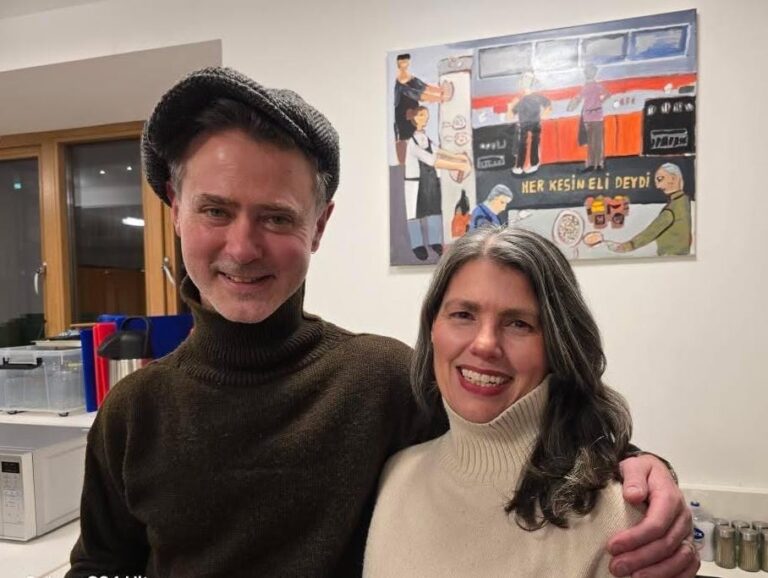Many elderly residents have happy memories of the time when the only holiday they got was working in the hop fields of Kent every September.
At the turn of the century there were families with anything up to twenty kids who lived in overcrowded slums amid the smoke and dirt of industrial Bermondsey.
Every August the papers would also give a report on the year’s hops crop stating whether it was good or bad so that hoppers had some idea of how much cash they would make.
Every year over 80,000 people went hopping. It combined earning extra money for winter boots and clothes with a chance to be out in clean air under the sun.
Thin, pale London kids could run free in the green fields and scrump apples in the orchards. Sufferers of TB and rickets could bask in the sunshine while asthmatics treated their lungs to the unpolluted air.
Mums and Grannies appreciated the beautiful landscape, tranquil dray horses and, most of all, the chance to have a peaceful chat and a cuppa. The whole family would go, including grandparents, family pets and even the local clergyman.
Come September, right up until the 1960s, London Bridge Station played host to half of Bermondsey who noisily waited for the hopper’s special to whisk them away to their holiday destination.
The hop farmers provided very basic accommodation, normally a corrugated tin hut and some straw, so all the comforts of home were packed up and taken along.
Jam sandwiches and bread and dripping were given to the kids to eat on the journey; this was an age long before burger bars.
Once on the train the holiday mood set in and everyone would sing and tell jokes. As the tops of the coastal houses appeared between the trees, the excitement grew.
Upon arrival at the allotted hut, a spring clean began before replicating the home comforts back in Bermondsey.
Curtains went up in the windows, tea was brewed, pans were hung up on hooks on the door and even pictures and mirrors were fixed up.
Hopping was hot, tough and tiring. Stripping the hops from the bines cut and stung the hands and turned them black so many people brought gloves.
It was a 12-hour day and back-breaking work but hoppers drank firkins (small barrels) of cider in the fields which no doubt kept them in the holiday spirit.
People obviously got ill during the season so the Salvation Army and the Red Cross would set up hopper’s hospitals. Here they tended to wounds and treated any diseases that sometimes broke out.
In 1928 there was a smallpox scare in Tunbridge Wells after a boy from Lambeth was discovered with pockmarks and peeling skin.
He had contracted the virus at home but it had not manifested itself until he had been in the hopfields a week.
A warning went out in the local paper of the time telling people to stay away from the fields until the virus had cleared.
Even though the work was hard there was still time for leisure. After a hard day, people would sit around the campfire singing, chatting and playing cards.
Mary Barrett recalls Johnny, a man with a wooden leg, who came from a large family of hoppers.
“We’d go down to Johnny’s hut with some bread that we would toast on his fire.
He’d tell us kids ghost stories about a woman in white from the Medway.
“It was good fun until it came to walking back across the field in the dark to our own hut!”
Some people ventured down to the local pub and happily staggered back in the pitch dark.
The farmers would put on entertainment for the kids and organised treasure hunts, horse rides and competitions.
There was also plenty of trade going on. Some farmers would give their workers a mid-season sub so that they could buy provisions from the various callers to the fields.
Professional photographers would visit and take pictures of the families in their best clothes, leaving their card for them to buy a picture when they got home.
Traveller families brought their colourful painted caravans and camped for the season. They sold rabbits to the hoppers for their teas along with handmade baskets, pegs and heather.
They were renowned for their herbal remedies and used the hops in their recipes. Hop pillows for insomniacs and cures for digestive problems (and no doubt hangover cures for the cider!) were all available to buy.
https://southwarknews.co.uk/history/in-depth-history/the-ashes-michael-ash-looks-back-on-the-blitz-hopping-holidays-and-a-life-in-the-book-business/
Travelling peddlers arrived laden with goodies such as braid, ribbons, buttons, brushes and pots and pans.
Local vendors called into the fields and set up shop with cakes, fruit and toffee apples. All in all everyone made something out of hopping and went home happy.
As the weeks rolled on, the hop bines would gradually become bare as all the hops were picked and put in houses to be dried on the floor.
At the end of the season the farmer would shout “pull no more bines” and the hoppers downed tools.
With a good suntan, stained hands and some cash in their pockets the hoppers returned back to Bermondsey healthy, happy and relaxed from their “holiday.”
This article was brought to you from The Bermonsey Buiscuit and Rotherhithe Docker







